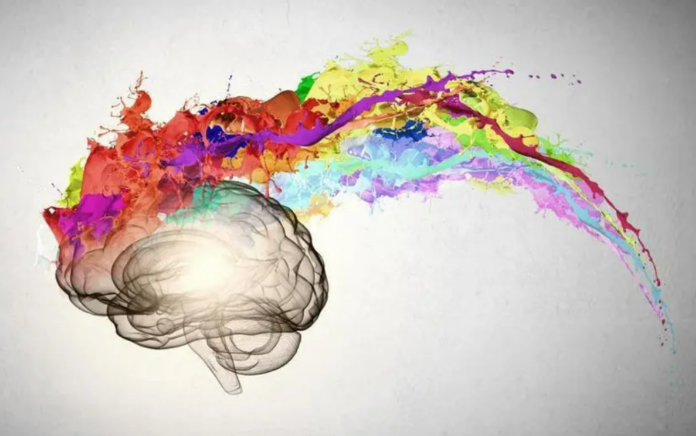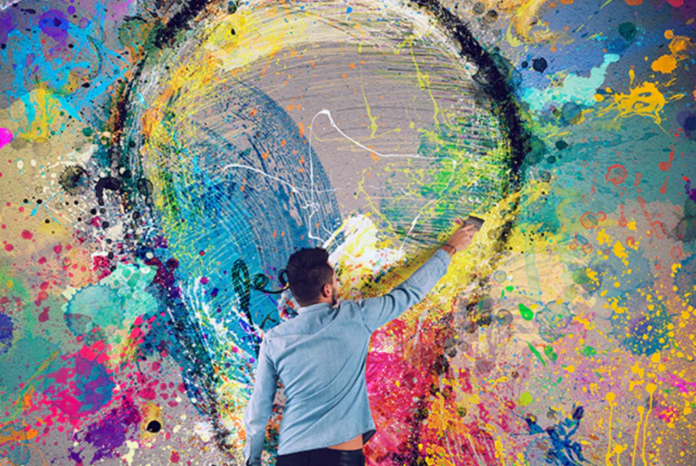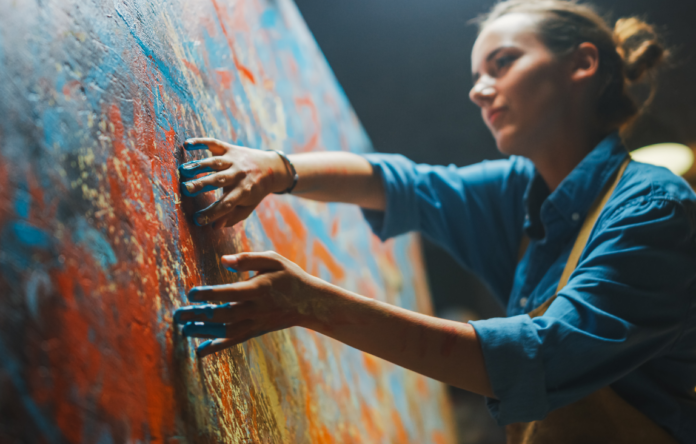
If you are asked to describe artistic mentality in three works, that would be “questioning established norms.”
This competency is essential if you work as a freelance photographer for a software development firm or chase wild eagles.
Today’s giants like Airbnb, Patreon, and Square all have people with an artistic background on C-level. Thinking like an artist helps make business, but can it be learned?
In this article, we’ll review the components of an artistic mindset and discuss if they can be trained to become a helpful tool for business growth.
What is an artistic mindset?

We all know about two parts of the brain – the left, which refers to logic and computational skills, and the right, which provides imagination and creativity. Now, it turns out the inclination toward a specific activity gets a physical imprint in the brain.
Does this peculiarity come from nature, or can it be trained?
Nature or nurture?
A group of scientists led by Rebecca Chamberlain from KU Leuven, Belgium, compared the brains of the artist and non-artist students as they performed drawing tasks. The report they further published on ScienceDirect shows that an artistic brain does differ physically. Yet, the brains of non-artist students change during painting too.
Dr. Chabberlain suggested that the “focus of expertise really does change the brain.”
Based on her conclusion, we might suggest that the artistic mindset can be trained.
The components of the artistic mindset

What does the artistic mindset consist of? The main components are observation, curiosity, imagination, ideation, and communication.
Artistic observation is the ability to anticipate a little more than others.
For example: when an average person sees a piece of wood, an artist sees a sculpture.
Businesspeople with an artistic mindset spot bleak business opportunities and transform them into successful ventures.
Artistic curiosity is the ability to question the simplest truths which seem obvious to others. In business, excessive curiosity helps to spot grey areas and improve them ahead of the competition.
Example: in 2009, Garrett Camp, the future founder of Uber, spent $800 on hiring a private driver, a service that most people found comfortable. He questioned whether it is possible to preserve the comfort of a private trip while cutting costs. We know how it ended up.
Imagination, or the ability to see the ready-made product before it even exists, is also necessary for people of science and technology. The genii like Nicola Tesla and Albert Einstein all reported they visually imagined the results of their research before they concluded them.
Ideation is the practical implementation of imagination and the ability to develop an image into a concept that wraps into practical details.
Communication, or the ability to present the concept to the audience, is a crucial element of artistic thinking that is also necessary for business.
To sum up

The artistic mindset is still the object of science; in the future, we will learn a lot more. Yet, today, we have an excellent opportunity to learn from the most outstanding examples of its business implementation and try to follow it. Just keep in mind that all great companies were started by dreamers.
Author’s bio: Anastasiia Lastovetska is a technology writer at MLSDev, a software development company that builds web & mobile app solutions from scratch. She researches the area of technology to create great content about app development, UX/UI design, tech & business consulting.








